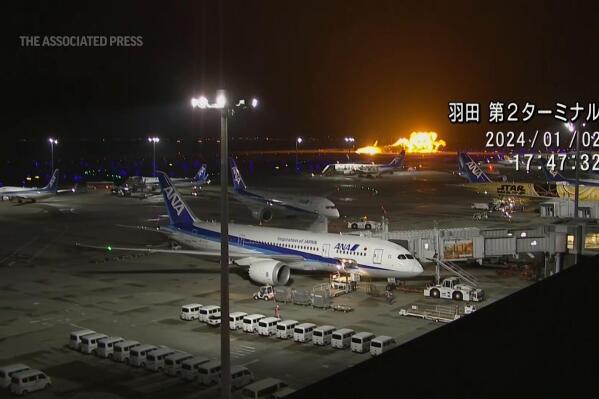As the conflict between Israel and Hamas approaches its third month, the families of the 132 hostages believed still to be held in Gaza cling to hope. Michael Levy has been counting the days since his younger brother, Or, was abducted from the Supernova music festival – and doing everything he can to ensure his return.

For nearly three months, Michael Levy has waited for news of his younger brother, Or, who was kidnapped by Hamas on October 7. They include sleepless nights and days of tirelessly working to secure the release of the "annoying genius", as he affectionately calls his kid brother who, as a three-year-old, "started to break things and put them back together".
Wearing a T-shirt with a photo of his brother printed on it, Levy explains how before he was abducted, Or led a successful life. “He taught himself to programme and became a genius computer engineer" before building a tech start-up, which he eventually sold, explains Levy.
“You see, here he is happy and smiling,” he says, pointing to the photo on his T-shirt. “That's not just a good picture. He's always smiling, always happy.”
Levy has become accustomed to telling the story of his brother and Eynav, his wife of five years. In a calm voice, he talks about how they were inseparable since meeting 14 years ago.

On the morning of October 7, Or and Eynav left their two-year-old son Almog with Levy’s mother to go to the Supernova festival. “They got to the festival at 6:20am, about ten minutes before hell started," explains Levy. Or texted his mother, telling her the couple had decided to head home. "But a few minutes after, he texted her again and told her that they were hiding in a bomb shelter next to the road.”
At 7:39am, Levy’s mother called Or. “He was completely terrified,” Levy says. “And when my mother asked, 'What's happening? Is everything okay?' he replied, 'Mum, you don't want to know what's happening.'"
Ten minutes after the call, Hamas stormed the shelter. "I know now because I watched horrible videos of Hamas coming to the shelter and throwing grenades and spraying bullets,” he says, looking around. “There were 17 people in there. I think the bomb shelter is pretty much the size of this room."
To understand what happened, Levy has talked with survivors, visited hospitals, and spoken to anyone who can help piece together the puzzle.
Then came the agonising wait. After eight days of no information, the Israeli army announced that Or was among the 240 hostages being held in the Gaza Strip. Eynav, however, was found dead inside the shelter.
‘He keeps calling for them’
The family is devastated, but they are doing their best to remain strong for Almog – a daily challenge for Levy and his parents.
"How can you tell a two-year-old boy that his mum won't come back?” Levy says. “We spoke to a few psychologists. Their recommendation was to just tell him that his mother won't come back. Just like that. And that his father is missing and that we are looking for him … He keeps calling for them.”
For now, Levy is refusing to succumb to grief and break down. "I try to stay normal. But it's a fight. And I'll let myself break when everything is back. Now is not the time."
On November 24, when the first hostage exchange for Palestinian prisoners was announced, Levy was happy. Not because he thought Or would be one of those released, but because other members of his new "family" would be reunited. "I knew he wasn't going to be released in this specific deal. I wasn't disappointed … My family and I were so happy to see other people’s loved ones being released.”
While the hostage-for-prisoner swap brokered by Qatar saw the release of 121 hostages, 132 others are believed still to be held captive in Gaza.

After nearly three months of frantic campaigning, backroom talks and intense diplomatic efforts to secure the hostages' release, Levy is exhausted and cannot hide his frustration. "There's a delegation here, a delegation there,” Levy says. “I try to keep my energy and focus on the goal, which is to bring him back and not to deal with things that I cannot control.”
It’s a wise strategy, considering the escalating tensions in the region. Following the November hostage-prisoner swap deal, a new round of discussions began in Egypt on December 29, but they were abandoned on January 2 after Hamas's deputy leader Saleh al-Arouri was killed in a Hezbollah stronghold in Beirut, Lebanon.
Read more
Incidents like the December 15 death of three hostages killed by an Israeli soldier while waving a white flag in Gaza, have tested the families' morale. Some vented their anger and began to openly question whether Prime Minister Binyamin Netanyahu's government is doing everything it can to bring the hostages home.
For Levy, the facts speak for themselves. "I'm a big fan of bottom lines and if they are not here, the answer is ‘no’," he says. "I’ve flown to four different delegations in the past month and a half, and I spoke to politicians, diplomats, media and whoever was willing to listen in order to make them pressure governments – the Israeli government, the Qataris, the Egyptians, Hamas. And that's what we can do, I guess."
After hearing that some of the returned hostages had had access to the news broadcasts while in captivity, Levy leaves messages for his brother on the radio. "I just want him to know that we are strong and that we are here for Almog – that we'll support him and show him love.”
“I will do everything to bring him back,” Levy says. “Even if I have to turn the world upside down, I will do it."
This article has been translated from the original in French.



















 A
A



 A New York state law aims to penalize helicopter companies that make too much noise. — © AFP
A New York state law aims to penalize helicopter companies that make too much noise. — © AFP